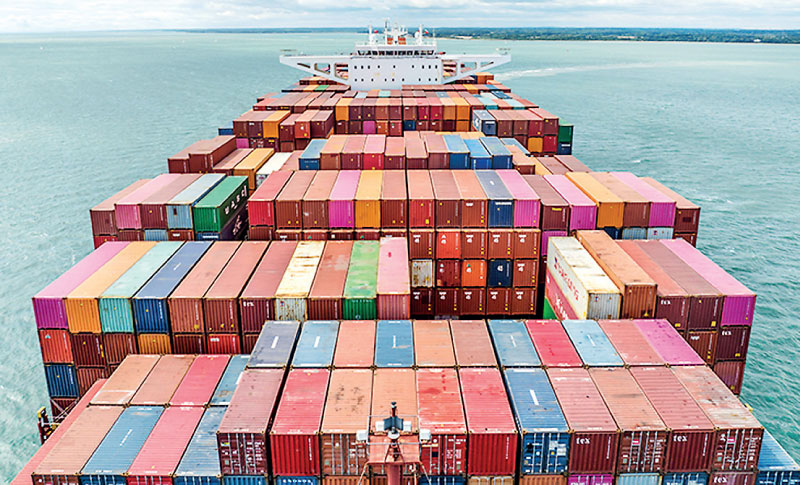Tuesday Dec 16, 2025
Tuesday Dec 16, 2025
Monday, 17 July 2023 02:19 - - {{hitsCtrl.values.hits}}

The onslaught of capacity ordered by carriers during the boom years of the pandemic is set to prove a headache, as weak demand looks set to lead to an anaemic peak season.
“We have now entered the month of July and peak season should be getting underway, but there is as of yet scant evidence of this happening,” said Sea-Intelligence chief executive Alan Murphy.
At the same time, however, Sea-Intelligence’s Trade Capacity Outlook shows a large influx of capacity being added to the main east-west trades over the coming months.
Figures for the first two weeks of September show carriers plan for increased capacity compared with the corresponding period of 2022. In the case of the Asia-Europe trade, capacity offered will be over 60% higher than last September. For the transpacific trade, there will be a third more capacity offered and even on the transatlantic head haul, carriers are projected to offer a fifth more capacity than at the beginning of the third quarter of 2022.
On the Asia-US west coast trade, following a reduction in capacity since September 2022, current deployment plans would see an increase in capacity of over 20% in August.
On voyages to the US east coast, where there had been less reductions, the situation would be even more challenging, Murphy said.
“Here we have only seen a genuine reduction in deployed capacity in the period from November 2022 until March 2023,” he said
“Since then, there has been a net growth in capacity. The slight dip projected in late July then stands to be overtaken by a much larger injection of capacity in August and September.”
The Asia-Europe trade had seen a “loosening of the capacity discipline” since the beginning of the second quarter and also had a “sharp capacity injection” projected for August and September.
On the transatlantic, where high spot rates lasted longer than on other trades, carriers injected sizeable amounts of capacity to benefit from the market as recently as spring 2023.
“Recently, this tapered off to a more modest capacity injection, but the projection is for a resumption of large amounts of new capacity,” Murphy said.
“This points to a very problematic development, where capacity has been cascaded into the Atlantic at an ever larger pace than what the underlying demand can absorb.”
Without a change in direction, carriers risked falling back on the time-honoured pattern of overcapacity driving down freight rates.
But, there were solutions available to carriers, if they had the discipline to implement them, Murphy said.
“The carriers have the ability to manage capacity, even in the face of a large supply/demand discrepancy,” he said.
“But this can be avoided by tactical use of blank sailings. Some of the idle capacity might then be sent to yards to get retrofitted for slow steaming, in preparation for the tightening environmental regulations.”
He warned, however, that failing to do so could lead to a difficult market for carriers.
“In a market where demand has only recently recovered slightly in Europe, and where the North American import growth continues to decline, the projection is obviously a significant problem for the upcoming market balance,” Murphy said.
“If the carriers do not change behaviour, this is what will happen. The carriers therefore appear to have a choice: resume active capacity management, or head into highly significant overcapacity.”